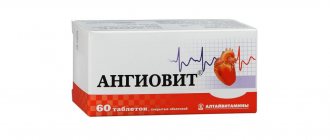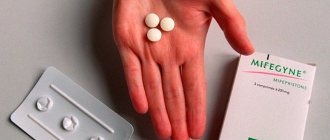What is Hofitol taken for?
Medicine in any form is prescribed for the following conditions and diseases:
- dyspeptic disorders, which are accompanied by nausea, vomiting, bloating, and indigestion;
- chronic hepatitis;
- cirrhosis of the liver;
- chronic renal failure;
- non-calculous cholecystitis.
In combination with other drugs with the same active substance, it can be used for the following problems:
- excessive weight;
- anorexia;
- atherosclerosis;
- urolithiasis.
Jaundice Newborns
Anna
December 30, 2021
Good afternoon, dear doctors!! Happy New Year to you!! Happiness and health!!! Please consult me about jaundice in a child. We are a month and a week away. Childbirth at gestational age 39.3, spontaneous, Apgar score 8-9. Weight 3750, height 53 cm. Girl. Discharged without any health issues. About a week after discharge, my daughter turned yellow. In the maternity hospital, they didn’t take blood for bilirubin, so I don’t know the initial value. I also don’t know my blood type, but I have the third positive, and my husband has the second negative. The visiting nurse and doctor said that the jaundice was physiological and would go away on its own, give me some water. It’s difficult with water, since my daughter is completely breastfed. I'm trying to give a little bit at a time. The point is that my daughter is already a month and a week old, and she still has yellow cheeks and the whites of her eyes and a little neck. The body is all clean. A month ago, we visited the pediatrician for an examination, she also told me to give her water to drink and prescribed a clinical blood test. She did not prescribe anything for bilirubin. With jaundice, we were allowed to receive a second vaccination against hepatitis B, the first was in the maternity hospital. Today we visited another pediatrician to get some blood tests. She paid attention to the hemoglobin level and told me to drink more water. And platelets and leukocytes are also increased. But she associated this with a violation of blood sampling - they couldn’t take blood from my daughter’s finger, she cried and clenched her fist tightly, as a result they strained with a glass tube for about five minutes. For jaundice, the doctor prescribed Hofitol to drink 5 drops 3 times a day. And she said that with jaundice we were not allowed to be vaccinated. According to the condition and well-being of the child, he is completely breastfed, there is no clear schedule during the day, on demand he can sleep for 2.5-3 hours, he can wake up every 40 minutes and ask for the breast. It can hang on your chest for an hour or two. He may not sleep during the day for 2-3 hours, but he doesn’t cry, and he gurgles. At night I feed him 2-3 times with an interval of 3-3.5 hours. The stool is frequent, happens every feeding, yellow with lumps. Gases are tormenting, in the evening, we give Espumisan 8-10 drops before feeding. If he gets really loud, I put in a gas pipe. Also, on the advice of the pediatrician, they began to give vitamin D - vigantol, 2 drops. We are treating dacreocystitis of the left eye - it has been festering since birth, plus there is a tear when crying. We dripped Vitobakt, Tobrex, Azidrop, and did a massage. It's better now. According to examinations per month - neurosonography, ultrasound of the gastrointestinal tract, kidneys, hip joints, echo - kg of heart - everything is normal. Examination by a surgeon, neurologist - everything is normal. Weight gain per month is 900 grams, height is 1 cm. Against the background of all of the above, I ask you to tell me whether our jaundice needs treatment or will it go away on its own? Should I take Hofitol? How safe is it for babies? I read that it contains ethyl alcohol. And how to give it correctly - dilute it with water or just 5 drops from a spoon? I also ask you to look at our analyzes and comment on them. Thank you all very much in advance.
The question is closed
Jaundice newborn Hofitol
Why take Hofitol during pregnancy?
You can take the drug only after examination by a doctor and his prescription. It is prescribed in the first trimester in order to prevent complications in the later stages, as well as to improve well-being in case of toxicosis in the early stages.
During the period of bearing a child, the drug has a positive effect on the liver, promotes the excretion of bile, has a mild diuretic effect, reduces the amount of cholesterol in the plasma, and has a positive effect on blood circulation. In addition, the medicine contributes to a general improvement in the condition, malaise and lethargy disappear, and mood improves.
The use of "chofitol" during pregnancy
L.E. MURASHKO, V.A. BURLEV, N.I. KLIMENCHENKO
Scientific Center for Obstetrics, Gynecology and Perinatology of the Russian Academy of Medical Sciences (director - Academician of the Russian Academy of Medical Sciences V.I. Kulakov), Moscow
SUMMARY
The drug "Hofitol" (ROSA-PHYTOPHARMA, France) was used in complex therapy in 2 groups of women: in the 1st trimester of pregnancy at risk of developing gestosis; in the 2nd trimester of pregnancy in patients with impaired feto-placental and uteroplacental blood flow and intrauterine fetal suffering. During treatment, women in both groups experienced a decrease in blood creatinine, an increase in oxygen flow and oxygen flow index. The intrauterine condition of the fetus improved according to Doppler measurements and cardiotocography. The drug can be recommended for widespread use in obstetric practice.
In modern obstetrics, a large role is given to medications that could effectively and safely provide a preventive and therapeutic effect on the condition of the mother and fetus from the earliest stages of pregnancy. The French laboratory "ROSA-PHYTOPHARMA" developed and proposed for use in obstetric practice the drug "Hofitol", which is a purified extract from the juice of fresh leaves of the field artichoke (3). In therapeutic clinics, it is used as a mild diuretic, choleretic agent, and is widely used for chronic nephritis and chronic renal failure. According to the literature, it is known that “Hofitol” has pronounced hepatoprotective properties, antioxidant activity, and hypocholesterolemic and azotemic effects of this drug are also noted. All these properties justify its use for the prevention of atherosclerosis, in the treatment of various types of intoxications and such serious diseases as cirrhosis of the liver, chronic and acute hepatitis (1, 3).
There are very few reports in the literature about the use of Hofitol in obstetric practice. However, the presence of antioxidant, hepatoprotective, diuretic properties, as well as the content of many macro- and microelements, including iron, phosphorus, manganese, vitamins A, B and C, provides grounds for its use in pregnant women. Since many diseases during pregnancy are accompanied by increased lipid peroxidation, changes in the structural properties of cell membranes, and metabolic changes in the functioning of the liver and kidneys, the use of “Hofitol” in a complex of preventive and therapeutic measures for obstetric pathology is justified.
One of the most severe complications of pregnancy is gestosis. All over the world, the optimal approach to the prevention and treatment of this disease has not yet been resolved. Priority is still given to comprehensive preventive and therapeutic measures in the early stages of the development of gestosis with the inclusion of drugs that have a pathogenetic effect on various parts of the process. In the pathogenesis of gestosis, a large role is played by changes in the structural and functional properties of cell membranes, in particular the ratio of phospholipids and cholesterol, activation of lipid peroxidation, decreased levels of antioxidants, and disruption of the detoxification and synthetic functions of the liver. These changes are multi-organ in nature and form a symptom complex of gestosis and lead to disturbances in the fetoplacental complex (2). The consequence of this is intrauterine suffering of the fetus. The inclusion of “Hofitol” in the complex therapy of gestosis is pathogenetically justified, based on the therapeutic effects of this drug (1, 3).
Purpose of the study
Studying the effect of “Hofitol” on the course of pregnancy, kidney function, oxygen transport function of the blood in pregnant women at different stages of gestation, as well as on the condition of the intrauterine fetus and newborn in women with complicated pregnancy.
Materials and research methods
We used the drug “Hofitol” in the form of an injection solution 5.0 and in the form of tablets 200 mg in 2 groups of women.
Group 1 consisted of 29 women in the 1st trimester of pregnancy (6-12 weeks) with a high risk of developing gestosis (pregnant women with extragenital diseases: hypertension, kidney disease, neurometabolic-endocrine syndrome, women who had gestosis in previous pregnancies). 15 women were diagnosed with early toxicosis of varying severity.
The 2nd group included 65 pregnant women in the 2nd and 3rd trimesters (24-38 weeks), who were diagnosed with impaired uteroplacental and fetoplacental blood flow according to Doppler measurements (in 29 women) and intrauterine fetal suffering according to CTG data (in 36 women). PSP ranged from 1.2 to 2.5 and averaged 1.68±0.12. Fetal hypotrophy of the 1st degree was detected by ultrasound in 12 women. Clinical signs of grade 1 preeclampsia (according to the Wittlinger scale) were observed in 11 women. The control group consisted of 23 people who received a generally accepted set of preventive and therapeutic procedures.
"Hofitol" in both groups of women was used intravenously by drip of 5.0 ml in 200.0 ml of saline 5 times every other day, then 1 tablet 3 times a day for 1 month.
A general clinical and obstetric examination of women was carried out.
Before starting to take “Hofitol” and after its completion, a biochemical blood test was carried out according to the “Clearance” program (the following indicators were determined: the content of urea, creatinine in the blood and urine, the clearance of urea and creatinine, the content of potassium, sodium, calcium, chlorides and blood and in urine and their clearance). According to the biochemical program “Oxygen and Hemodynamics,” the following were determined: stroke and minute volume of the heart, total peripheral resistance, oxygen flow and its index, oxygen content in the blood and oxygen saturation of the blood, indicators of the acid-base state of the blood. The Rehberg test was performed in both groups of women. In order to monitor the condition of the fetus, dynamic Doppler, cardiotocography, and ultrasound diagnostics were performed in the 2nd group of women.
The severity of early toxicosis before and after treatment, the severity of gestosis and its manifestations, the intensity of fetal movement, and the tolerability of the drug by women were also assessed. The outcome of pregnancy and childbirth and the condition of the newborn were analyzed.
Research results
The use of "Hofitol" in both groups of pregnant women did not cause allergic or adverse reactions and was well tolerated by women.
Table 1. Dynamics of biochemical parameters of blood and PSP during therapy with “Hofitol”
| Norm | Group I | Group II | |||
| before treatment | after treatment | before treatment | after treatment | ||
| Blood creatinine | 44-80 µmol/l | 60,6±3,22 | 51.8±3.4 (-14.5%) p<0.05 | 73,8±2,4 | 62.6±2.5 (-15.2%) p<0.05 |
| Oxygen flow | 1036-1229 ml/min | 936,8±46,3 | 1031,1±38,9 (+11,0%) | 890,0±32,8 | |
| Oxygen Flow Index | 616-780 ml/min m2 | 675,4±22,4 | 735,7±21,8 (+10,9%) | 596,2±12,3 | 633,3±19,6 (+10,6%) |
| PSP | up to 1.0 | 1,68±0,12 | 0,88±0,5 | ||
After completing the course of treatment with Hofitol, women in the 1st trimester of pregnancy showed an improvement in their subjective state: nausea stopped and appetite improved. In pregnant women with early toxicosis, the degree of its severity decreased significantly.
In women in the 2nd and 3rd trimesters of pregnancy, fetal motor activity improved during and after therapy.
"Hofitol" had a beneficial effect on some biochemical parameters in both groups. There was a significant decrease in blood creatinine levels by 14.5% (p <0.05) in group 1 and by 15.2% in group 2. Before the drug was prescribed, the blood creatinine level was 60.6±3.22 µmol/l in the 1st group of women and 73.8±2.4 µmol/l in the second. After completion of the course of treatment, its values were 51.8±3.4 µmol/l and 62.6±2.5 µmol/l, respectively (Table 1).
As is known, an increase in the level of cratinin in the blood during gestosis indicates a violation of the nitrogen-excretory function of the kidneys. As our studies have shown, when taking Hofitol, its level decreases. In the women we observed, creatinine levels and their dynamics during therapy were within normal values. However, the ability of “Hofitol” to lower creatinine levels can be successfully used in a complex of preventive treatment measures for gestosis (2).
During the treatment, there was also an improvement in the oxygen transport function of the blood. An increase in blood oxygen flow and oxygen flow index was observed. Oxygen flow increased from 936.8±46.3 to 1031.1±38.9 ml/min (by 11.0%) in group 1 and from 890.0±32.8 to 1023±31.1 ml /min (by 11.5%) in group 2. The oxygen flow index also increased from 675.4±22.4 to 735.7±21.8 ml/min m2 (by 10.9%) in group 1 and from 596.2±12.3 to 633. 3±19.6 ml/min·m2 (by 10.6%) in the 2nd (Table 1).
A decrease in fetoplacental and uteroplacental blood flow leads to fetal hypoxia, delayed development, and malnutrition. There are numerous etiological factors for fetal oxygen deficiency. According to the mechanism of development of the process, the most common arterial-hypoxemic form of fetal hypoxia occurs. It is a consequence of impaired oxygen delivery to the uteroplacental bloodstream and the gas exchange function of the placenta. The resulting hypoxia leads to the development of a number of metabolic changes, including metabolic acidosis. Therefore, for diagnosing fetal oxygen deficiency, some biochemical indicators, such as oxygen flow and parameters of the acid-base state of the blood, are informative. The complex of therapeutic measures to successfully combat fetal hypoxia must include drugs that could help ensure an adequate supply of oxygen to the fetus (2).
The data we obtained on the increase in oxygen flow and oxygen flow index during treatment with Hofitol indicate that this drug can be successfully used in the complex treatment of hypoxic conditions of the fetus of various origins. Thus, “Hofitol” may affect individual links in pathogenesis that occur during fetal hypoxia. This fact can be explained by several mechanisms underlying the action of this drug. First of all, this may be due to the antioxidant properties of “Hofitol” and its detoxification activity (1.3).
Against the background of improvement in biochemical blood parameters, the intrauterine state of the fetus was normalized in group 2 of women according to functional studies. In 16 women out of 29 (55.2%), indicators of fetoplacental and uteroplacental blood flow were normalized according to Doppler measurements, and in 11 (37.9%) their dynamics were positive. The fetal condition indicator according to CTG data after the end of the course of treatment significantly decreased and amounted to 0.88±0.5 (Table 1). This indicator returned to normal in 25 women (69.4%) and improved in the rest. In patients with fetal malnutrition, a positive effect was also achieved. Ultrasound fetometry a month after the start of therapy did not reveal any progression of malnutrition. All this made it possible to prolong pregnancy until timely delivery and reduce the risk of perinatal losses.
In patients with grade 1 gestosis, no progression of this disease was observed. The diuretic effect of the drug in women with edema was also noted.
In patients at high risk of developing gestosis, the following results were obtained. Preeclampsia of 1st and 2nd degrees was subsequently diagnosed in only 5 women, which is 17.2% and comparable to the population risk of its development.
Pregnancy ended with timely birth in 27 patients of group 1 (93.1%), in 2 patients premature birth occurred at 34-35 weeks of pregnancy. 5 people (17.2%) were delivered by caesarean section. Indications for surgery were: a scar on the uterus after a cesarean section in 3 people, weakness of labor in 1, and a clinically narrow pelvis in one patient.
29 live children were born with a body weight of 2450 - 3870 g and an APGAR score of 6 to 9 points. 3 newborns were born with a mild degree of asphyxia of 6-7 points.
Among pregnant women of group 2, 32 people (88.9%) delivered on time. Premature birth occurred in 4 women at gestational ages of 34 to 36 weeks. Caesarean section was performed in 8 people (19.4%): in 3 people due to the presence of a scar on the uterus, in 1 woman in labor due to the onset of acute intrauterine fetal hypoxia, in 2 due to persistent weakness of labor, in 1 pregnant woman with breech presentation, in 1 woman according to the sum of relative indications.
Women of the 2nd group gave birth to 36 live children weighing 2340 - 4230 g. The APGAR score ranged from 6 to 9 points. 5 newborns were born with mild asphyxia.
It should also be added that after our research, we used Hofitol for various pathological conditions during pregnancy. The inclusion of “Hofitol” in the complex therapy of early toxicosis made it possible to significantly more quickly reduce the severity of this disease. We observed a pronounced preventive and therapeutic effect of “Hofitol” in women with extragenital pathology of the gastrointestinal tract, liver, and kidneys.
Conclusions:
The study showed that the pronounced antioxidant, hepatoprotective, and detoxification properties of “Hofitol” allow it to be widely used in obstetric practice.
Based on the data obtained, an optimal prevention and treatment regimen with Hofitol was developed. In our opinion, it is advisable to start treatment with intravenous drip injections of the drug, 5.0 ml every other day in 200 ml of saline, for a total of 5 infusions every other day. After this, it is possible to recommend taking the drug in tablet form, 200 mg 3 times a day for a month. During pregnancy, 3-4 courses of therapy can be carried out. For preventive purposes, it is permissible to use the drug only in tablet form.
Thus, our studies have shown the wide possibilities of using “Hofitol” for pregnancy pathologies. It can be recommended as part of a set of preventive measures if there is a risk of developing gestosis from early pregnancy. The inclusion of "Hofitol" allows you to increase the effectiveness of treatment also for disorders of fetoplacental and uteroplacental blood flow, fetal hypoxia in the 2nd and 3rd trimesters of pregnancy.
Which is better: Allohol or Hofitol
These two drugs can cope with diseases of the liver and biliary tract. Allochol contains activated carbon, bile, and garlic bulbs.
The medicine has a choleretic effect and has a positive effect on the functioning of the liver and gastrointestinal tract. Also, under the influence of active elements, flatulence decreases.
The difference is that Hofitol additionally has a protective effect.
It is advisable to take the drug Allochal for long-term therapy for biliary dysfunction. Hofitol should be used if the patient also has liver disease.
Hofitol
Chophytol is a choleretic herbal preparation made from field artichoke. The mechanism of its action is due to a set of biologically active substances contained in the leaves of the field artichoke. The combination of cynarin + phenolic acids exhibits a choleretic effect and allows the use of Hofitol as a hepatoprotector. The thiamine, riboflavin, ascorbic acid and inulin contained in artichokes normalize metabolism. In addition, Hofitol has a diuretic effect and promotes the removal of urea from the body. The multicomponent composition of the herbal medicine makes it impossible to conduct pharmacokinetic studies, because The biologically active substances contained in artichoke leaves cannot be traced in the body using traditional markers or biological studies. Available in tablets and solution for oral use. The recommended duration of pharmacotherapy is 2-3 weeks. Repeated courses are possible, the need for which is determined by the doctor on an individual basis. With prolonged use of the drug in submaximal doses, the development of dyspeptic disorders is possible. Hofitol has proven itself in the treatment of patients suffering from various liver pathologies (hepatitis, cirrhosis) and diseases of the biliary tract (cholecystitis, dyskinesias). The plant nature of the drug gives it a number of advantages over synthetic drugs. It causes virtually no clinically significant side effects. The bioflavonoids, biogenic amines, terpenoids, vitamins and minerals included in its composition give the drug a mild hepatoprotective and antioxidant effect. Hophytol is practically non-toxic, which allows it to be included in long-term drug courses in patients of any age without increasing the risk of side effects.
The drug is suitable for use in outpatient settings. Clinical studies have shown the versatility of its pharmacodynamics. In addition to choleretic, antioxidant and hepatoprotective, it has a detoxifying, mild diuretic and hypocholesterolemic effect. Hofitol can be used as part of complex treatment or as monotherapy. An improvement in the general condition of patients is observed, as a rule, already in the second week of treatment: their sleep is normalized, their appetite improves, their mood improves, and the severity of epigastric pain decreases. A month after the start of treatment, the improvement in the condition of 85-90% of patients is supported by both objective indicators and subjective assessments. In 10-15% of patients, clinical symptoms of the disease persist, but they become much less pronounced. The drug can also be used in patients with cholestasis syndrome, because Hophytol, unlike individual hepatoprotectors, does not aggravate their condition. It is important that the normalization of the processes of formation and excretion of bile observed when taking Hofitol helps to improve digestive function in general, because The hepatobiliary system is in close contact with the gastrointestinal tract. Pregnancy and breastfeeding are not direct contraindications to the use of Hofitol, but drug therapy in such cases should be carried out under mandatory medical supervision. The drug should not be used in patients with biliary obstruction, during exacerbation of kidney disease, or in children under 6 years of age. The liquid form of Hofitol contains small amounts of ethanol.






